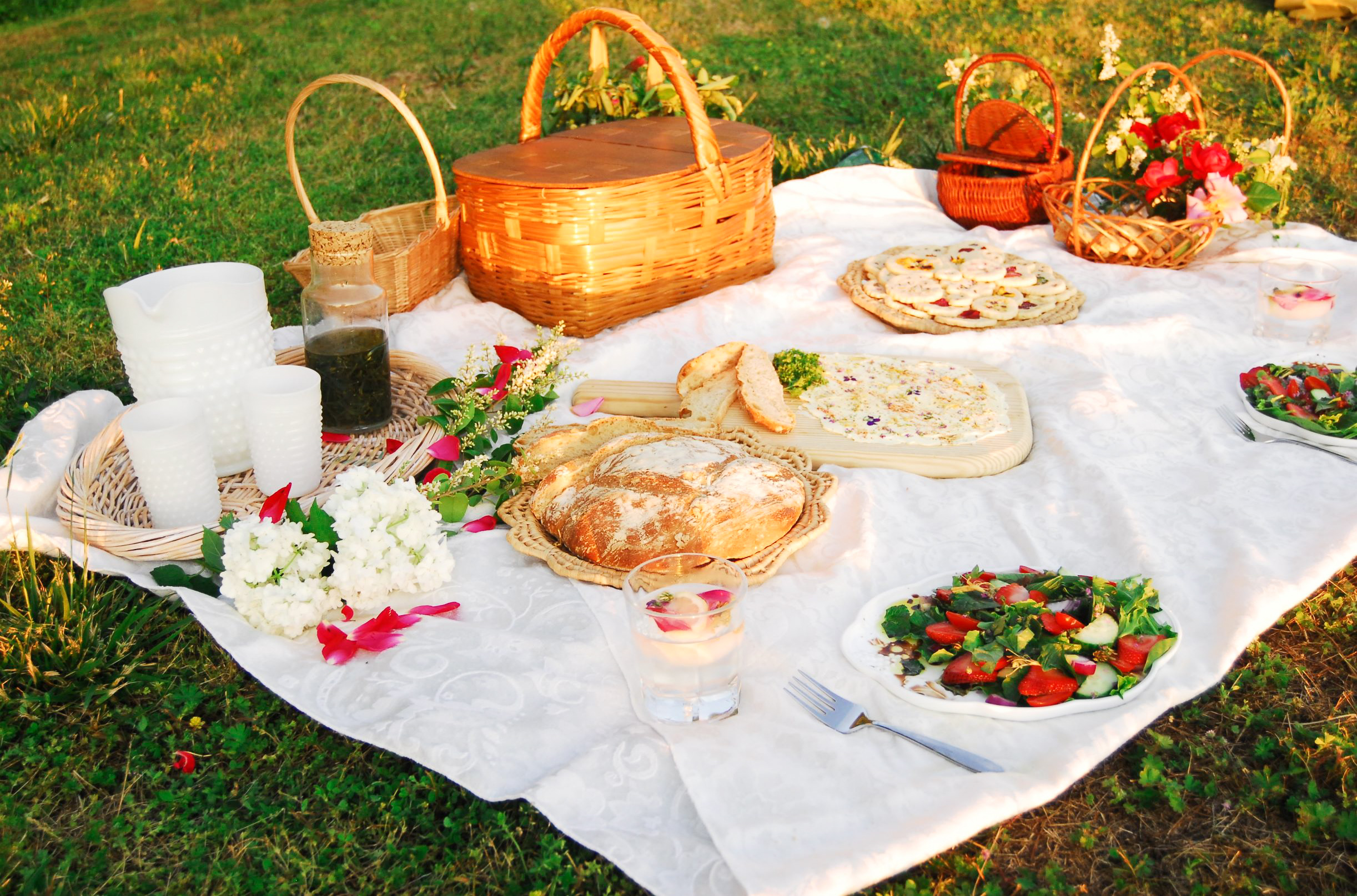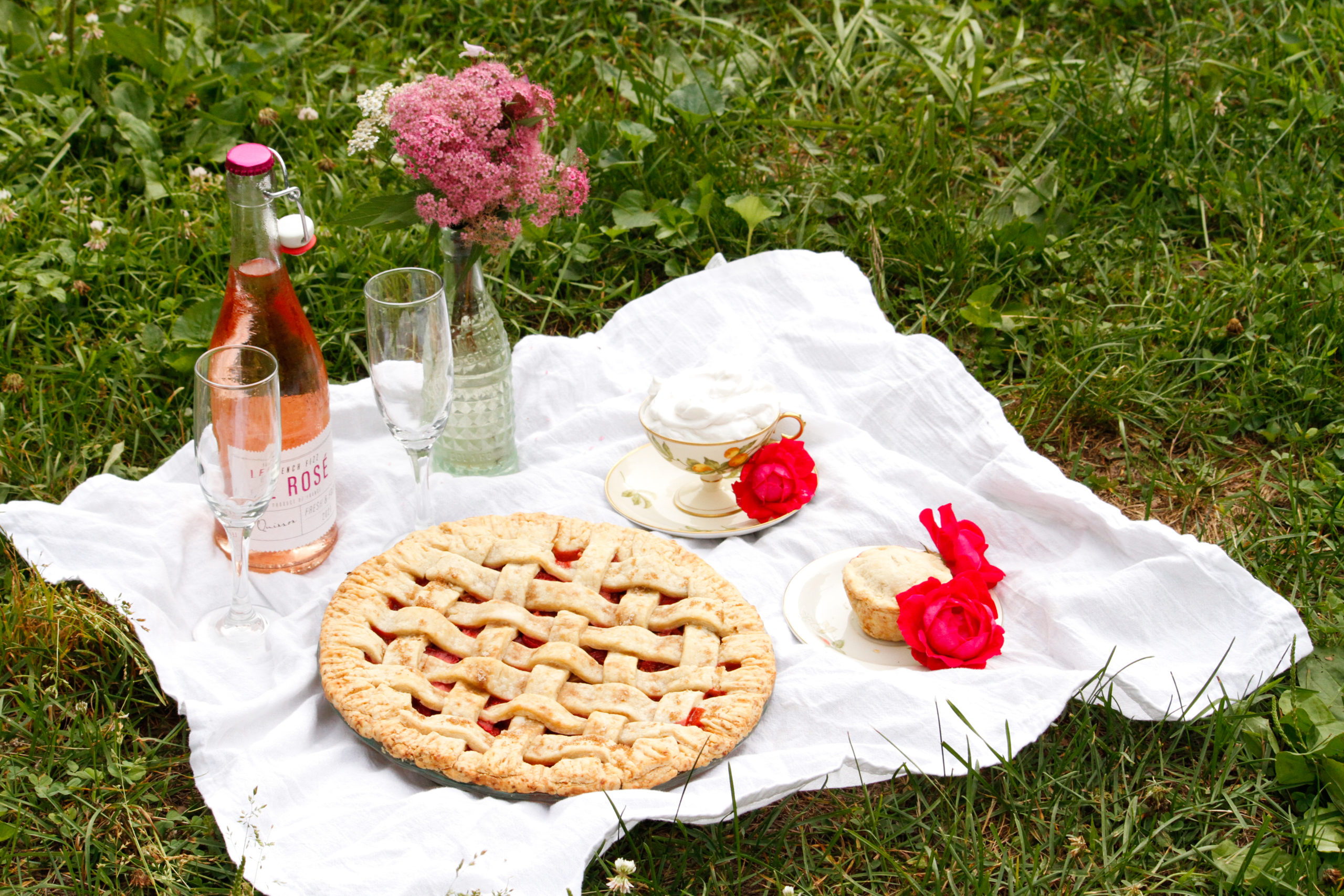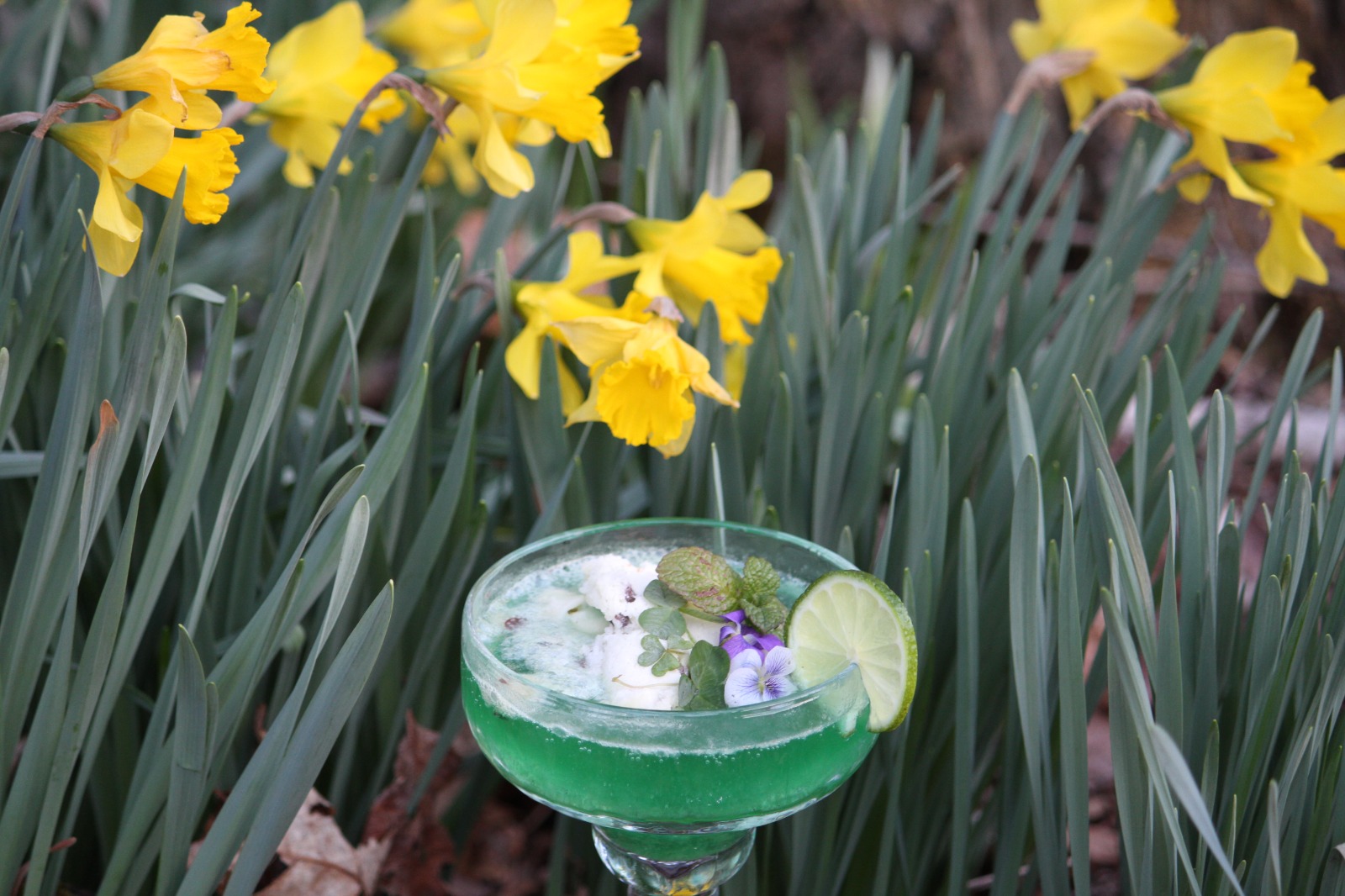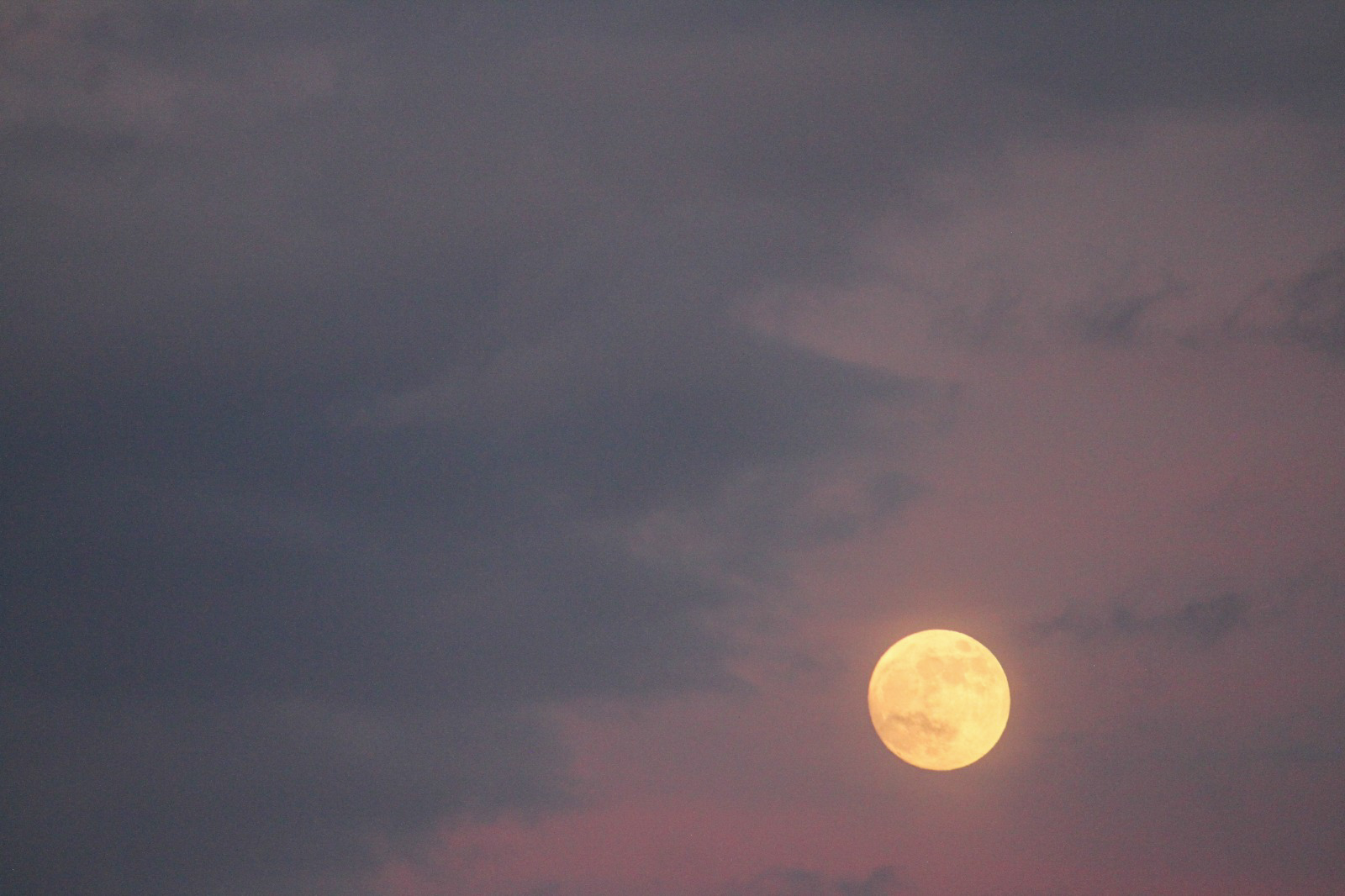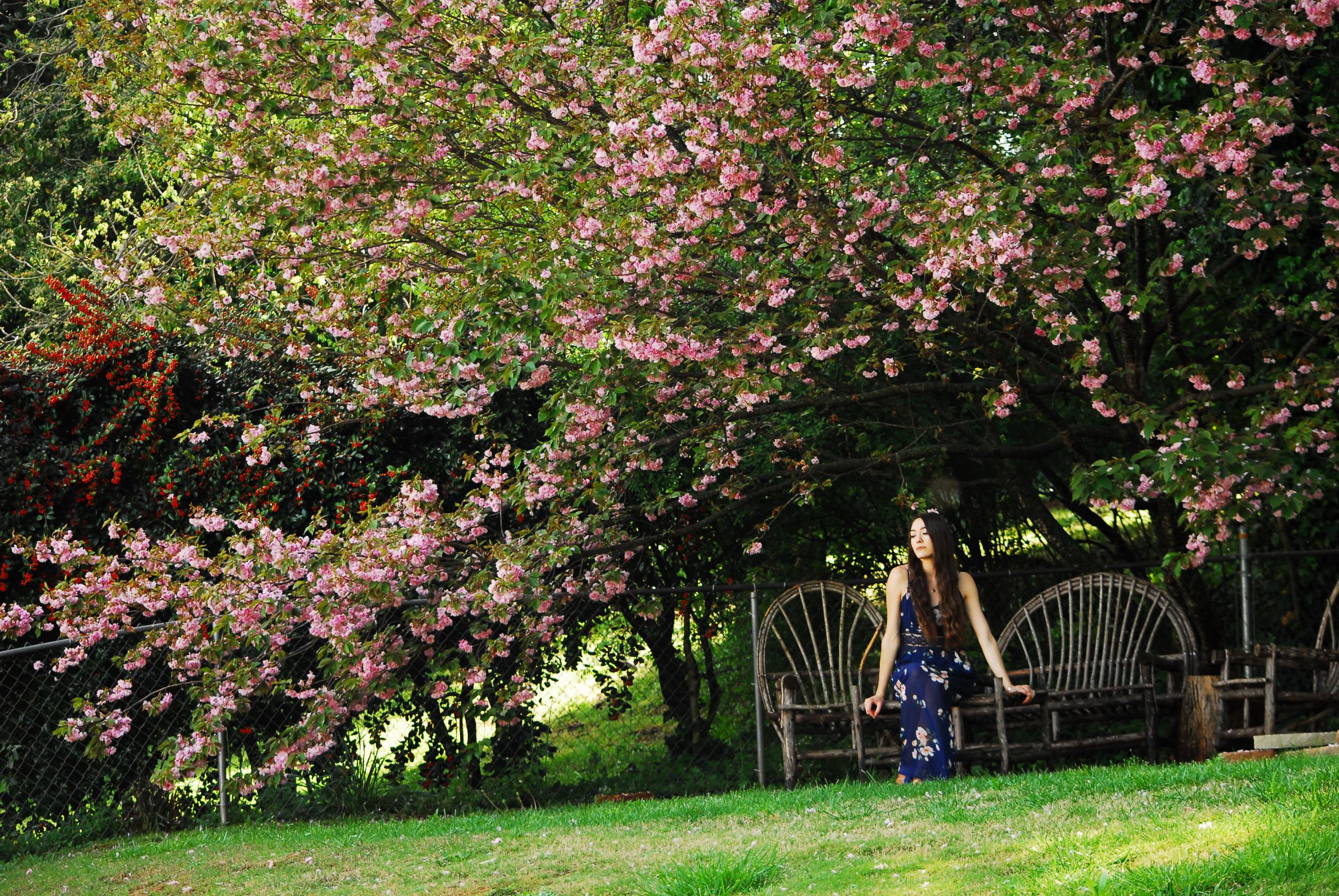Late spring and early summer: we’ve arrived at ideal picnicking season! Here is a simple menu that we featured in our May Day post. You can read all about the whole of our lovely May Day celebrations in this post. However, the highlight of the day was the picnic we had at sunset. In celebration of spring, we foraged for a lot of edible wildflowers and greens as ingredients! At the end of this post you can read a round-up of what plants we foraged, and why. Here is an in-depth look at the menu:

The first thing I made was the bread. A rustic loaf: good, old fashioned, and crusty. I wanted to find simple recipe that was not fussy. I was looking for a recipe with only the 4 basic ingredients for bread: flour, water, salt, and yeast. Most importantly, I wanted a recipe that would give a fluffy crumb (the texture of the interior) rather than too thick and dense. I found exactly what I was looking for on this website: The recipe is a breeze and includes no kneading (hurray!).
https://www.plattertalk.com/homemade-crusty-bread/

I made an herbed butter to go along with the bread. We used a vegan butter and spread it across a cutting board as you would paint with a pallet knife! Then on to the fun part: pressing edible flowers and herbs into the butter. Normally, I would do a mix of oregano, mint, thyme, dill, lavender, and parsley from my garden whipped into the butter before spreading it out and pressing the flowers in. This year, due to not having my own garden we just had to roll with it and use what was on hand. Which happened to be a jar of dried Italian herbs. Thankfully nature grows its own store of wild herbs and all it costs is the time it takes to go foraging and then prep your finds! We collected loads of wild geraniums, birds-eye speedwell, violets, dandelion, and honeysuckle which we pressed into the butter. Basically, like flower sprinkles! Not only are many flowers edible, containing valuable nutrition, but many have medicinal properties as well. I will cover some of the medicinal properties of each plant in the last part of this post.

The salad we made was super delicious and easy to make. First, we layered the plates with a bed of wild greens mixed with just your typical spring greens salad assortment. For our wild greens, we foraged chickweed, plantain, dandelion, and violet greens and chopped them bite sized. We threw in some chopped parsley on top of that. Over the greens we arranged halved cherry tomatoes, half-moon slices of cucumber, slices of strawberries, and some diced red onion. To top it off we threw in just a few ‘flower sprinkles’ for good measure. Specifically, honeysuckle, dandelion flowers, violets, wild geraniums, and birds-eye speedwell. The dressing was drizzled off the side of the salad. If you drizzle olive oil first and then balsamic vinegar over it, it separates into a nice dappled design.

Between the flower cookies and the drink, it’s hard to tell which stole the show. The cookies turned out pretty amazing though. I made a simple batch of vegan sugar cookie dough, any recipe will work fine. What makes them stand out is what you add to the general recipe to give it a special flavour. I made two types. Into the first half of the batch I added coarsely chopped rose petals, a tiny bit of almond extract, a few drops of orange flower water, and vanilla. Into the second half of the batch I added loads of dandelion flowers (green base removed), lemon zest, and vanilla. The flavours were perfect. Delicate and distinct but not overpowering. But really, the showstopper for these cookies are the decoration! Right before we put them in the oven, we decorated them by pressing in all sorts of flowers and even a few small leaves. The flowers and leaves we used for the cookies were violet flowers plus their cute heart shaped leaves, dandelion, rose petals, honeysuckle, birds-eye speedwell, wild geranium, pansies, dianthus, and wood sorrel flowers. Of course, the flowers are much more vibrant before baking, but they still turned out so beautiful with sort of that pressed flower look.
The drinks were lots of fun. Basically, I created a fancy soda-esque take on a honeysuckle infusion. First, we harvested a few cups’ worth of honey suckle. For two cups of blossoms, I poured 3 cups of boiling water over them. While I was waiting for the water to boil, I rinsed the flowers, pinched off the green bases, and threw them in tall glass jar. I don’t think it’s absolutely essential to pinch off every bit of green though. The next time I made the infusion I was too busy to pinch off the green bases and the infusion turned out fine. After I poured the boiling water over the flowers, I sealed the jar and let it cool before putting it in the fridge.
You can let it infuse for as little as 3 hours, but I just went ahead and left it in overnight the day before the picnic.
To assemble the drink, I took some fancy glasses, rubbed mint and lemon oil extract around the rims and then rimmed them in sugar. I put two parts chilled honeysuckle infusion (flowers strained out) and one part seltzer water. I added very thinly sliced cucumber and lemon and then piled in some rose petals, fresh honeysuckle flowers, a rose bud or two, and a sprig of lemon balm. The result was gorgeous and smelled as good as it tasted. To make it sweeter than the delicate honeysuckle flavour, sugar or a syrup could be stirred in. I didn’t think it needed any extra sweetness.
Of course, we couldn’t pass up the opportunity to also make wildflower-citrus ice cubes for the occasion! We didn’t have fancy ice cube trays, so we made do with muffin tins. The flowers we used were more of the same: rose petals, dandelions, and violets with some slices of lemon and lime. Nothing dresses plain water up more than a huge wildflower-citrus ice cube!
And there you have it. A simple, nutritious, delicious, and absolutely gorgeous picnic.
Mini-Herbal

Now for the cool part. Part of the fun of May Day was the time spent foraging. I am always so excited and grateful to think that I can find a wealth of free, highly nutritious things growing all around me. I love making ‘yard salads’- where you take a walk in your own backyard (as long as you are sure there are no chemicals being sprayed there) and find very common ‘weeds’ that could also be considered secret superfoods. After the dirth of green in winter, I love watching the ground just erupt with vibrant, intricate, and incredibly nutritious plants.
Here is a quick look at a few of the medicinal properties of the stars of the show—the plants we used in our picnic:
Violet:
The common blue violet has edible and medicinal leaves and flowers and can be eaten in large quantities.
– It is taken internally as a blood cleanser and is cleansing and strengthening to the liver and kidneys.
– Violet is anti-inflammatory and cooling
– Externally, it can be used to help heal wounds, heal skin conditions, and stop itchy bug bites even!
– It stimulates the lymph system
– It is an expectorant and is used for respiratory problems
Wild Geranium:
Wild Geranium (Geranium maculatum) goes by a lot of fun names: Cranesbill, Shameface, Old Maid’s Night Cap, Chocolate Flower, and Sailor’s Knot to name a few!
Wild Geranium has so many medicinal properties. Here are a few that I think many people may find interesting and useful. Wild Geranium is very high in tannins. It has both astringent and antiseptic properties. Astringent means it is good at contracting and tightening tissues. Therefore, it is:
– Hemostatic and can work to stop internal hemorrhages
– Along the same lines it helps to stop wounds from bleeding and helps to heal them when used as a poultice
– It helps slow heavy menstrual bleeding
– It is effective as a gargle to treat throat infections, tonsillitis, and inflamed throat and gums
– The leaves can be crushed up fresh and applied to bug bites and even used as a mosquito repellant!
– There are so many more uses for Wild Geranium. It is worth looking into. You can find the dried rhizome, and dried leaves in health food stores.
Birdseye Speedwell, also known as Persian Speedwell and Gypsy Speedwell:
Historically, it was used a substitute for black tea in France. It was even called Europa Tea because it smelled and tasted similar. The good thing about using this as a tea substitute is that is caffeine free and is rich in vitamins and minerals.
– speedwell is a decongestant and expectorant
– Externally it is used to help heal wounds and stop bleeding due to its astringent and hemostatic properties
– It is also used externally as an eye-wash for strained and tired or itchy eyes.
– It is a tonic to the kidney and liver and cleanses the blood
– Drinking speedwell tea has a mentally clarifying as well as relaxing effect. That alone is motivation for me to harvest speedwell for tea!
Dandelion:
The whole plant is edible, but I am specifically mentioning the medicinal properties of the dandelion leaf. The flowers are edible, taste like honey with a bitter kick at the end (especially if you eat the green base).
– The leaves support and promote blood, kidney, and liver cleansing
– They have higher levels of iron and vitamin E than most greens- they are basically a superfood
– They are very anti-inflammatory
– They have lots of antioxidants
Honeysuckle:
Honeysuckle, that is, Japanese Honeysuckle- that very invasive plant that takes over as soon as you turn around. Specifically, here are some medicinal properties of the flower/bud:
– It is anti-inflammatory
– It is antibacterial and antiviral!
– It is an expectorant and decongestant and is used to treat respiratory tract infections
– It regulates blood sugar levels
– It is detoxifying for the liver
– It promotes healing for skin conditions
– It stimulates the immune system
Chickweed:
Chickweed is very mild and can be eaten or made into tea every day! It is very nutritious and due to being so mild, it can be substituted for lettuce and eaten raw in salads or sandwiches etc.
– It is useful to help clear acne, eczema, and other skin issues.
– It is anti-inflammatory
– It is an expectorant
– It helps heal wounds
– Interestingly, it can stimulate breast milk production
Rose:
Rose flowers, buds, and rose hips are edible and medicinal. The leaves can be used medicinally as well. Here are just a few of the medicinal properties of the flower (rose petals and buds) specifically.
– Pink and red rose petals especially are very nutritious and are loaded with antioxidants!
– They are anti-inflammatory
– Known as ‘nervine’ which means they are helpful for the nervous system and calming.
– They are an aphrodisiac
– They are good for the heart!
Plantain:
Plantain seems to grow just about everywhere and has SO many uses medicinally. It can be cooked as a green or just thrown into salads raw. It has a ton of vitamins and minerals such as beta carotene, calcium, vitamin K, among many others. Here are some medicinal properties of the leaves:
– It purifies the blood and supports liver health
– It is supportive of the entire digestive tract
– It has a broad array of uses externally for skin health. It is soothing and astringent so it can cool a sunburn and take the sting from bug bites as well as draw out the toxins and even splinters. It is helpful in healing rashes. Taken internally it helps clear skin from acne and eczema.
– It stimulates new cell growth and promotes healthy skin
– It is anti-inflammatory and antibacterial
– It stops bleeding
– It is an expectorant
Dianthus:
The name Dianthus comes from divine “dios” and flower “Anthos.” The petals smell like cloves and are often candied or used as a garnish due to that fact.
– The aerial parts are used as a bitter to stimulate the digestive system and help with digestion.
– Dianthus is antibacterial
– It is anti-inflammatory
– It is used to treat urinary tract infections, urinary stones, as well as cystitis
– A fun fact is that the plant has a lot of sapponins. If you simmer the leaves, the water can be used as a soap to clean skin and even clothes!
Lemon Balm:
Lemon Balm is a lovely garden/kitchen herb. You may find its lemony smell is similar to that of citronella in bug repellant although not as strong. In fact, it acts as a mosquito repellent as well.
– Lemon Balm is helpful for easing stress, insomnia, and anxiety
– It is calming, helps brighten the mood, helps improve cognitive function
– It is antibacterial and antiviral
– It can soothe an upset stomach, helps IBS, and acid reflux
– One thing to note is that Lemon balm used in high doses medicinally, not just in the occasional tea or thrown into salad etc, may slow the production of thyroid hormones. It is not recommended to use medicinal doses of Lemon Balm for more than 4-6 weeks in a row.
Pansy:
I used cultivated pansy, but Wild Pansy is more medicinally potent. For the medicinal properties, I will be referring to Wild Pansy. Wild Pansy has some great common names from the UK where it is prevalent. Some fun ones are: “Love-Lies-Bleeding, Love-in-Idleness, Call-me-to-you, Jackjump-up-and-kiss-me, Meet-me-in-the-Entry, Kiss-her-in-the-Buttery.” In French, Pansies are called “Pensées” (thoughts), which is where we get its modern name.
– It is an expectorant and is used in tea form to treat asthma and bronchitis
– It is a diuretic and is used to treat cystitis and bladder inflammation
– The flowers and leaves are used internally and externally to treat skin problems such as acne, psoriasis, and eczema
Last but not Least- Wood Sorrel:
Also known as Oxalis (which means sour) due to its oxalic acid content. Raw Wood Sorrel tastes like Granny Smith apples with a lemony kick at the end! It can be thrown in salads, soups, and made into tea for example. Wood Sorrel has one big caveat though- due to its high oxalic acid content it shouldn’t be eaten in large quantities as it will inhibit calcium absorption. On the bright side though it is great in small doses. It is rich in beta carotene, vitamin C, phosophorus, iron, calcium, protein, and flavonoids among other constituents!
– It is cooling – used as thirst quencher and to break fevers
– It is soothing to the stomach and can help with indigestion
– It is astringent and is used in poultice form to stop seeping/weepy/bleeding wounds. It can also help relieve
the itch and pain from bug bites
– Interesting note: it can be used as a curdling agent for plant ‘milks’
This list of medicinal properties/uses barely scratches the surface of what these plants can do, but I hope it piques your curiosity to look into what “plant allies” as herbalists say, you might have growing right outside your door! Why not go foraging for some extra pep to bring to the table, or as in our case picnic!
Happy picnicking, foraging, and just generally enjoying late Spring/early Summer!

